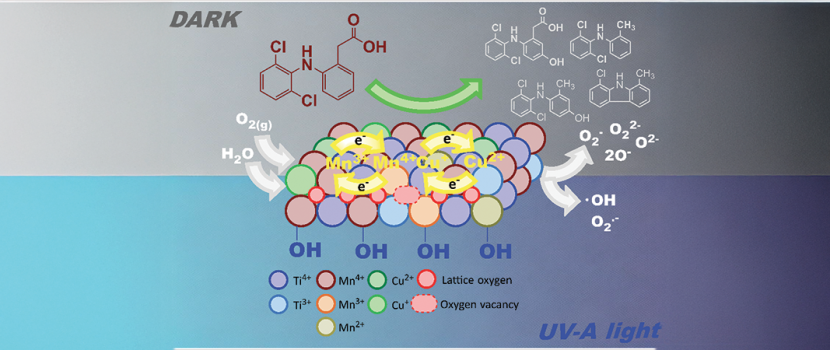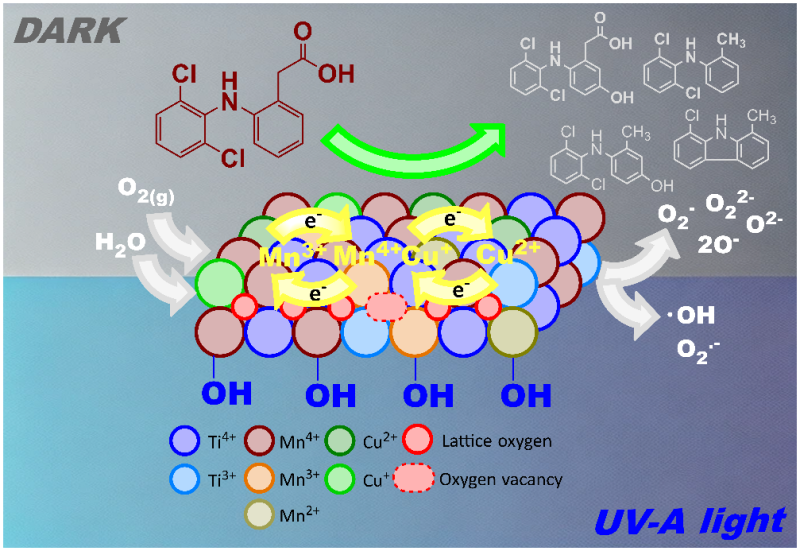
Dual-mode catalytic degradation of diclofenac by copper oxide-modified TiO2/MnOx composites: insights from dark and UV-A activation
Diclofenac sodium (DCF), a widely used nonsteroidal anti-inflammatory drug, is a persistent pharmaceutical contaminant that resists removal by conventional wastewater treatment. In this study, CuO-modified TiO2/MnOx composites were developed as multifunctional catalysts for DCF degradation under both dark and UV-A conditions. The materials exhibited dual-mode reactivity through distinct mechanisms: (i) non-radical oxidative degradation under dark conditions, and (ii) radical-mediated photocatalysis under UV-A irradiation. Under illumination, the formation of an interfacial p–n–p heterojunction between CuO, MnOx, and TiO2 generated internal electric fields that directed charge carrier migration—electrons flowing from the conduction band of TiO2 toward CuO and MnOx domains, and holes in the reverse direction. This spatial charge separation suppressed recombination and sustained redox cycling between Cu2+/Cu+ and Mn4+/Mn3+, promoting continuous ROS generation. In the absence of light, DCF degradation proceeded via non-radical oxidative pathways involving surface-bound reactive oxygen species and redox-active metal centers. Surface-sensitive XPS and hydroxyl quantification (TOTH) revealed elevated Mn3+/Mn4+ ratios, enriched surface-associated lattice oxygen, and high –OH group densities for the most active catalysts. These features collectively facilitated pollutant adsorption, oxygen activation, and sustained interfacial electron transfer. LC-MS/MS analysis confirmed a consistent degradation pathway across both regimes, involving hydroxylation, decarboxylation, and dechlorination of DCF. The Cu/5Ti5Mn-HT and Cu/8Ti2Mn-HT catalysts achieved exceptional dark-phase degradation efficiencies (∼99.8% and ∼99.4%, respectively), while Cu/TiO2 exhibited the highest UV-A photocatalytic performance (∼42%). These findings demonstrate the synergistic advantage of redox-active metal oxides and interfacial design, establishing CuO–MnOx–TiO2 composites as promising candidates for advanced pharmaceutical pollutant remediation.
Reference: ISSA, Gloria; KŘÍŽENECKÁ, Sylvie; BEZDIČKA, Petr; POPELKOVÁ, Daniela; KORMUNDA, Martin et al. Dual-mode catalytic degradation of diclofenac by copper oxide-modified TiO2/MnOx composites: insights from dark and UV-A activation. Online. Catalysis Science & Technology. 2025. ISSN 2044-4753. Available at: https://doi.org/10.1039/d4cy01400f.
The archive of other published articles can be found here
